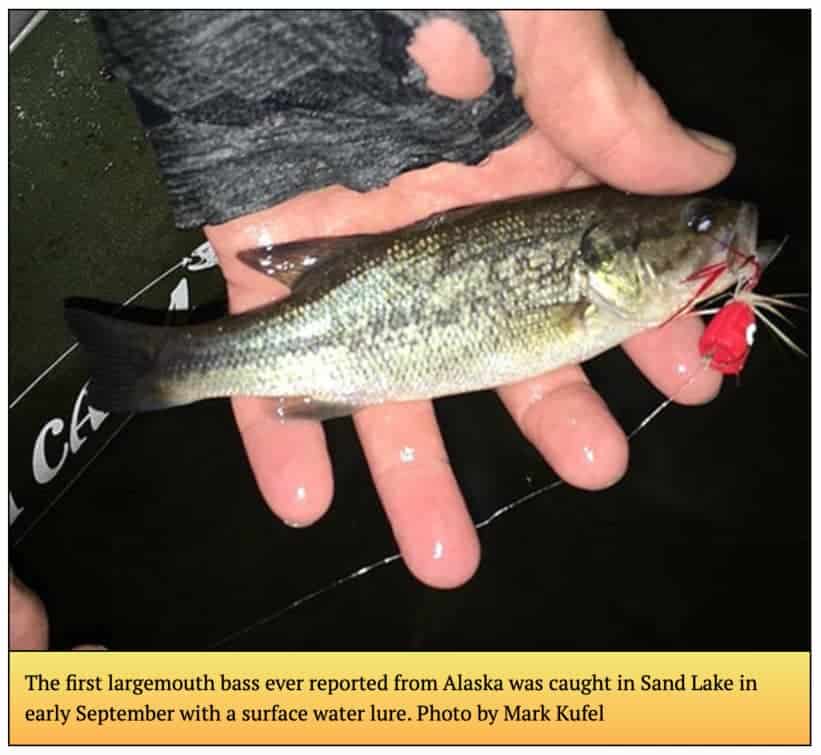
The state of Alaska is known for its fantastic fishing and angling opportunities. But, are there Panfish in Alaska?
It’s an extremely large state, with many diverse habitats from the temperate Southeast to the extreme cold tundra of the Arctic Circle. Many people think of Salmon, Halibut, and Big Lake Trout when talking about Alaska Fishing…but what about Bluegill and other sunfish species?
Table of Contents
Are There Panfish in Alaska?
None of the species commonly referred to as Panfish are native to Alaska. Alaska is far outside the native range of these warm-water fish. The term panfish colloquially refers to a group of smaller ‘pan-sized’ freshwater fish, commonly found in the sunfish and perch family. This often includes the Bluegill, Redear Sunfish, Warmouth, Crappie, and Yellow Perch.
Are There Bluegill In Alaska?
Bluegill are not native to Alaska, and they are not stocked in any lakes, ponds or rivers. Bluegill are a warm-water fish found through the eastern and central United States. Although they may survive in Alaska, they would likely be stunted from the short warm months, and compete with native populations of trout and salmon.
Are There Crappie In Alaska?
Black Crappie and White Crappie are not native to Alaska. They are considered a warm-water species and are not indigenous to Alaska. Wildlife officials and fisheries biologists have no intentions of introducing Crappie to the region for fear of them competing with native species.
Are There Bass In Alaska?
Largemouth Bass and Smallmouth Bass are not native to Alaska. In fact, it is illegal to transport live bass anywhere in the state. However, in 2018 a juvenile Largemouth Bass was caught in Sand Lake near Anchorage Alaska.

Although Largemouth Bass and Smallmouth Bass may survive in Alaskan waters, fisheries managers do not want this non-native species competing with Trout, Salmon and other native fish. Bass are voracious feeders, and if they were introduced to the Alaskan eco-system they would compete for resources and have a negative impact on wildlife.
Take for example the Northern Pike. They were illegally introduced in Alaska a few decades ago and have been causing problems for wildlife managers ever since. They compete with Native fish populations, eat fish fry and have the potential to really disrupt the natural eco-systems.
Through many illegal introductions over the years as well as dispersal via connected waters, pike are now in over 100 different lakes and rivers in these areas. Their impacts have ranged from completely wiping out trout populations in shallow lakes on the Kenai Peninsula, to resulting in the loss of king salmon fisheries in places like Alexander Creek…
-Kristine Dunker fishery biologist Alaska Department of Fish and Game, Division of Sport Fish, in Anchorage, Alaska.
So What types of fish are in Alaska?
Alaska is home to over 50 species of freshwater fish, including popular species such as Rainbow Trout, Dolly Varden, Salmon, Burbot, and many others. For a full list of native and introduced species, visit: http://www.adfg.alaska.gov/index.cfm?adfg=ffinventory.species

I have personally fished in Alaska, and by far my favorite area is the Kenai Peninsula. There are hundreds of lakes and rivers. My personal favorites are the Russian River, the Anchor River, and the mighty Kenai River.
Conclusion
Panfish, as they are often referred to in the contiguous United States and Canada do not occur in Alaska. The waters are just too cold, and over the course of millennia they’re native ranges never reached that far north.
But don’t worry, with thousands of lakes, rivers, and creeks filled with a variety of fish species, Alaska has outstanding fishing and angling opportunities for anglers of all backgrounds. Thanks for reading!
Are you interested in something a bit warmer, perhaps even tropical?- Check out our article on the exciting world of EXOTIC Panfish Species:
Like this post? Save it on Pinterest.

